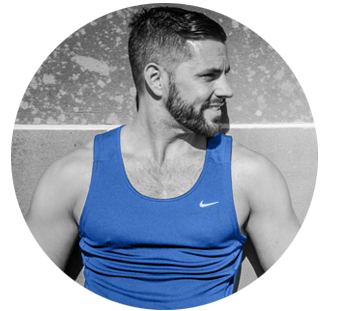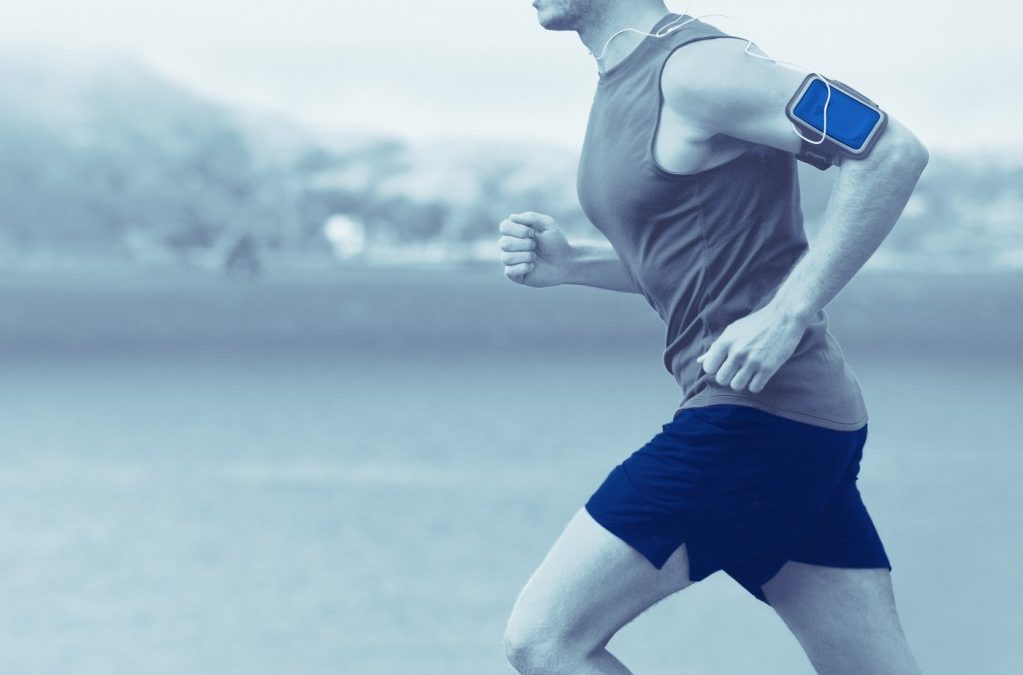
by Dinny Morris | Dec 5, 2016 | Motivation
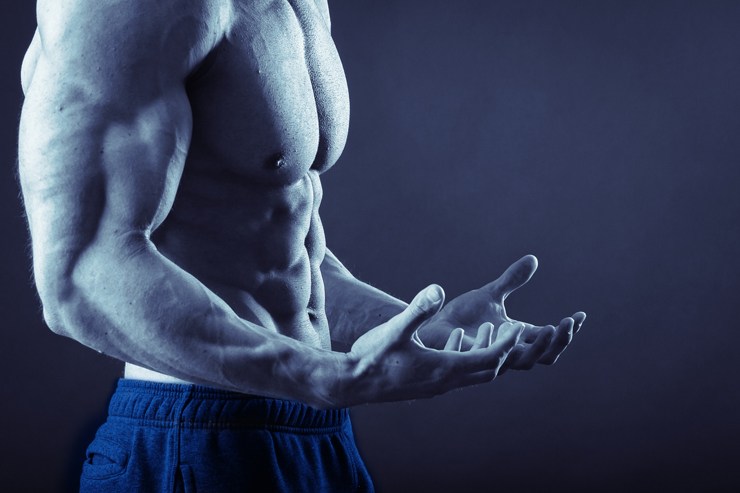
Are you finding it hard to stay motivated to exercise, eat right and lose weight? If so, you are not alone. A lot of exercisers and dieters suffer from occasional or even permanent lapses in motivation. Without sufficient motivation, you are very unlikely to reach your fitness or weight loss targets so here are TEN benefits to losing weight and getting fit – just to remind you of why getting in shape is such a damn good idea!
1. More energy
If you are 20kg overweight, that’s 20kg of dead weight you have to lug around every minute of the day. That has got to be exhausting! To get a better idea of how your excess weight is effecting you, work out your ideal weight and put the difference between that and your current weight in a backpack and wear it for a few hours. Imagine how much easier virtually every one of your daily tasks will become without that weight dragging you down!
2. Better health
Excess body fat can have a negative effect on virtually every aspect of your health from your blood pressure to elevating your chances of suffering a heart attack or stroke to increased risk of cancer. Being significantly overweight can slash years off your potential lifespan and can severely compromise your quality of life too. Losing weight will have a huge impact on not only how you look but your overall health too.
3. Less back, knee and hip pain
Remember that 20kg of excess weight that is slowing you down and making you tired? It’s also hammering your knees, hips and back too. All that additional compressive force increases your risk of suffering joint pain which can, if ignored, develop into crippling arthritis. Losing weight is a very effective back pain intervention as belly weight really does a number on your lower back and general posture.
4. Better sleep
Large amounts of fat in your chest and abdominal cavity can adversely affect your sleep leading to deep-seated fatigue, headaches and stress. The fat presses down on your internal organs, especially your lungs as well as your throat, and that can actually interrupt your breathing – something called sleep apnea. At best, this makes you snore and will wake you up every few minutes. At worst, it could actually kill you https://opencuny.org/ambien-10mg-for-sale/ in your sleep. Losing weight will prevent both!
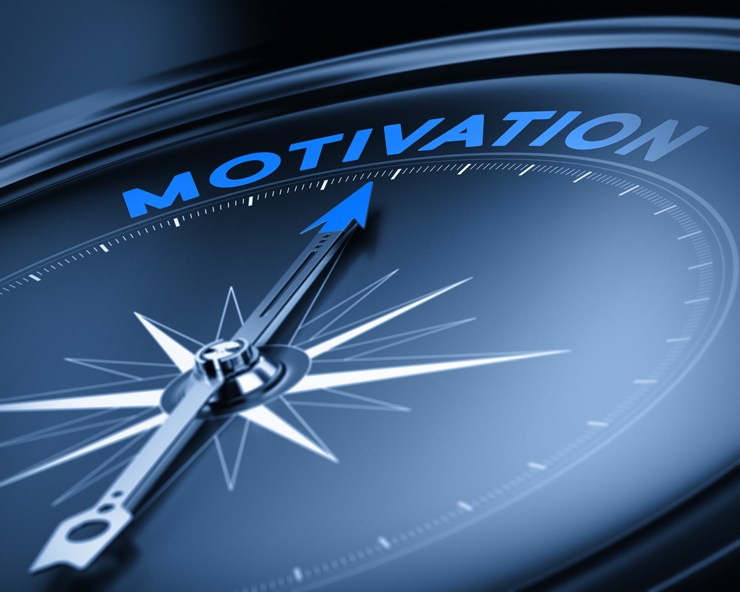
5. More money
Being overweight, as previously discussed, affects your health and poor health can cost you money. Days off work, lack of productivity, medical bills, specialized beds and furniture, oversized clothes and, of course, a big food bill can all place a strain on your financial resources. Losing weight is good for your body and your bank balance – who knew!
6. More sex!
Slim, healthy people get more sex – it’s a fact! Being slim enhances not only your appearance but also helps normalise your hormone levels – the very same hormones that control your sexual desire and performance. Overweight couples often experience difficulty becoming pregnant and losing weight can significantly improve the chances of conception which is why weight loss and exercise are often prescribed to couples by fertility doctors.
7. Increased self-confidence and improved self-image
Slim, healthy people generally have greater self-confidence and a better self-image, especially when compared to their former overweight selves. This has a lot to do with appearance but is also because, having lost weight, you will have demonstrated to yourself that you can overcome challenges if you put your mind to it. Losing weight can be very empowering and, for many, signals the start of a new, more rewarding, phase of life.
8. More fashion choices
Many modern fashions are simply out of the question for very overweight people – skinny-fit jeans being a classic example. If you want to be able to choose what to wear instead of being limited to just what fits, you need to get your weight down to within healthy parameters.
9. Better complexion
The causes of being overweight inevitably includes poor food choices such as candy, cola, cookies, cake and processed foods. In addition to making you fat, these foods are also devoid of any meaningful nutrients and can have an adverse effect on your complexion and even your hair. Eating a diet high in essential vitamins and minerals but low in sugar and refined or artificial ingredients can make skin breakouts and rashes a thing of the past and leave you with a beautifully clear complexion.
10. More happiness
Are you happy with your current weight and lack of fitness? Truly happy? Like most overweight people, I strongly expect you’ll feel much better about virtually every aspect of your life after you have started to lose weight and improve your fitness. Everything from your energy levels to your outlook on life will be better once you shed those unwanted kilos, establish some better habits and get a grip on your health. Being overweight is hard on your health, your back, your knees, your ability to sleep, your mobility…in fact, being overweight affects every single aspect of your life. You KNOW you’ll be happier if you lose weight and get fit so stop procrastinating and get to it!
There are dozens or benefits to losing weight and get fitting but, ultimately, you need to choose to take action. Spend time thinking about all the things you are missing out on by being overweight and unfit and then, maybe, you’ll come to realize that eating a little less and doing some exercise is really no big thing and that the rewards will make your efforts thoroughly worthwhile.
Share this:
Click to share on Twitter (Opens in new window)
Click to share on Facebook (Opens in new window)
Click to share on Google+ (Opens in new window)
AUTHOR
Hi, my name is Dinny Morris. I’m a personal trainer and in sunny Sydney, Australia.
I work with men and women at all levels of their physical development, from overweight couch potatoes who want to get in shape, to professional athletes and natural bodybuilders who want to beef up strength and body mass.
Hi, my name is Dinny Morris. I’m a personal trainer and in sunny Sydney, Australia.
I work with men and women at all levels of their physical development, from overweight couch potatoes who want to get in shape, to professional athletes and natural bodybuilders who want to beef up strength and body mass.
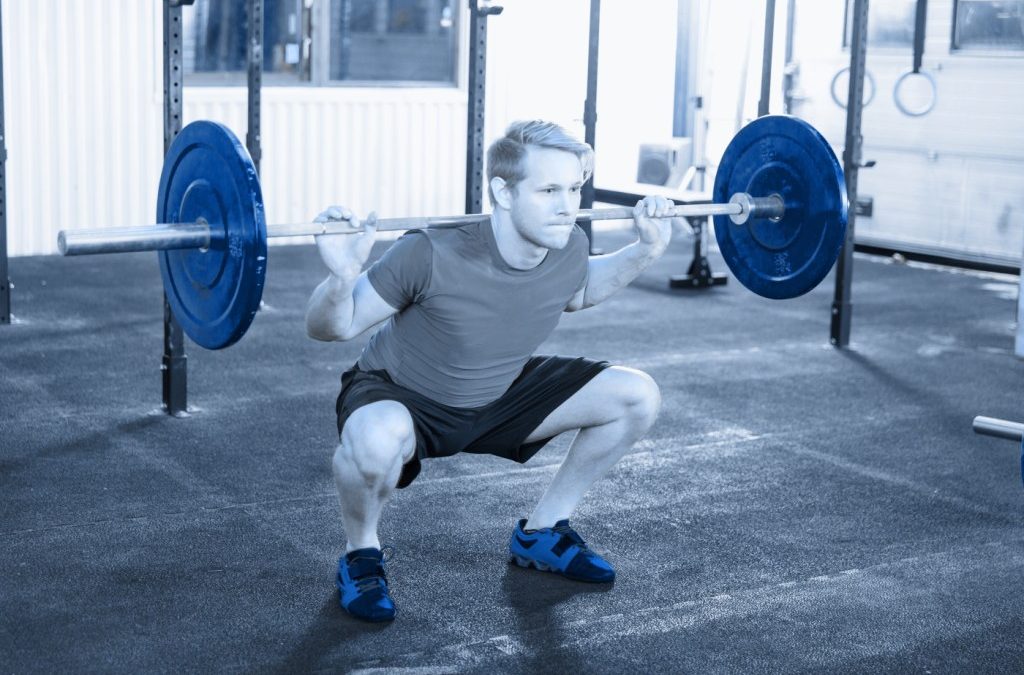
by Dinny Morris | Dec 5, 2016 | Dinnys Blog
Squats, especially barbell squats, are often referred to as the King of exercises. Why? It really depends on who you talk to! For some, squats are the King because they are probably the most functional exercise you can perform. Sitting down to read this article, you did a squat. You’ll do another when you get back up, another when you sit on the toilet or get in and out of your car… it’s all but impossible to get though a day without doing some squats.
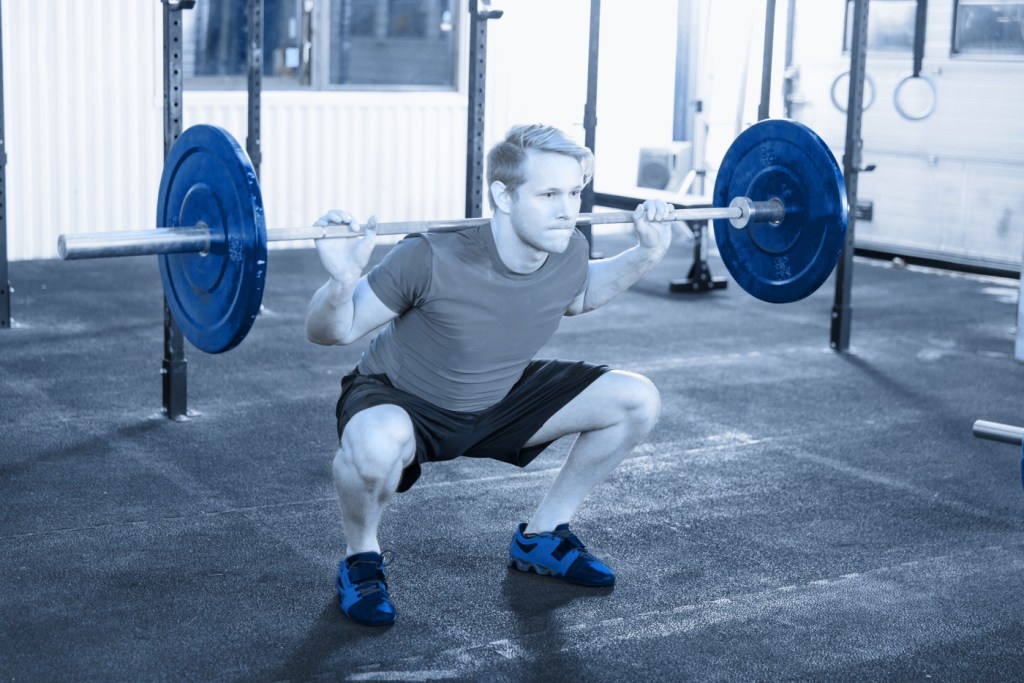
Also, leg strength is vital for just about every sporting activity from running to jumping to kicking. Squats develop strength in spades.
Squats or squat variations are a great exercise for any strength training program for both men and women.
Finally, squats, especially heavy squats, are strongly linked to triggering a cascade of anabolic or muscle-building hormones to be produced inside your body. It is for this reason that squats are closely linked to not just increasing leg strength but whole body strength.
Of course, to get the most from squats and squatting you need to do them right so read on if you want to learn to master the King of exercises!
Muscles used
While squats ARE a leg exercise, in weighted squats, your upper body must work really hard to keep the bar positioned properly on your back and ensure your torso remains safely uptight. However, most people perform squats for the lower body benefits so let’s focus on those muscles. Most squatting variations strongly involve:
Quadriceps
Hamstrings
Gluteus maximus
Abductors
Adductors
Erector spinae
Core
Who are squats good for?
Squats are good for just about everyone – from aging grandmothers to Olympic sprinters. They develop the muscles that are needed in just about every daily and sporting activity. If you want increased leg size and strength, a more toned butt, to be able to jump higher or run faster, to have healthier knees, stronger bones or improve your general conditioning, squats will get it done.
Who should not do squats?
While only one study back in 1961 has ever suggested that squats were bad for your knees, if you already have knee pain, you may want to use one of the less demanding squat variants. The same is true of hip pain. A good squat does not put too much stress on your back but if you are unable to squat with impeccable form or you have a pre-existing back problem, heavy squats may not be ideal and you should choose a less weighted variation.
Finally, if you lack sufficient mobility and flexibility to squat without rounding your lower back, skip squats for now as rounding your lower back is a shortcut to injury when squatting.
Proper squat performance
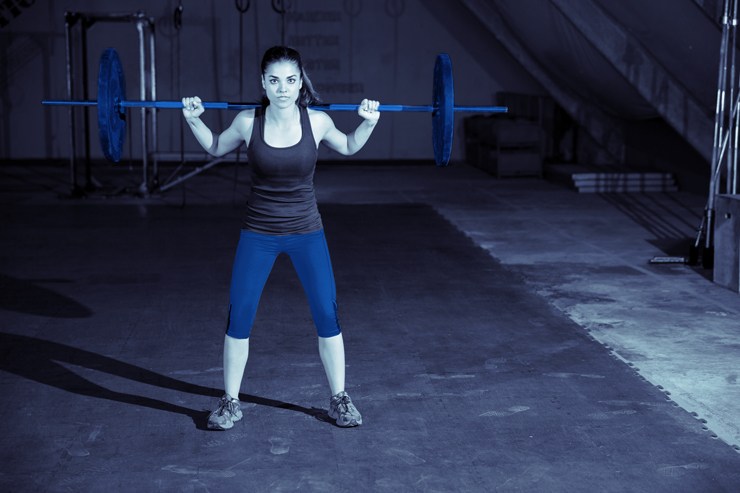
Whether you are squatting 200 kg or just with your bodyweight, you need to squat properly to get the most from this exercise and avoid injury. For ease of explanation, this technique description is for barbell back squats. Most forms of squats are performed similarly and using the same main teaching points.
1. With the bar in a squat rack set at mid-chest height, duck under the bar and grab it with a wider-than shoulder-width overhand grip.
2. Push your upper back against the centre of the bar.
3. Grip the bar tightly and hold it in place on your back – pull it down so it is positioned solidly.
4. Stand up and un-rack the bar – take 1-2 steps back.
5. Stand with your feet shoulder-width apart and turn your toes out slightly.
6. Lift your chest, arch your lower back slightly and inhale.
7. Push your hips back as though you are reaching for a chair a little too far behind you. Bend your knees and, under control, sink down into a squat. Try to get your thighs parallel to the floor. Push your knees out and keep your chest up.
8. When you hit the desired depth, reverse the movement by pushing your hips up and straightening your knees. Exhale as you ascend.
9. Stand up straight, reset your position and inhale. Down you go again!
10. On completion of your set, walk back into the rack and replace the bar.
Tips for maximum benefits and mistakes to avoid
Squats are challenging so if you are going to do them, you might as well do them right! Follow these tips to ensure you get the most benefits possible with the least amount of risk. Again, most of these tips pertain to barbell back squats but many can just as easily be applied to other squat variations.
1. Wear flat, solid shoes – running shoes are great for running but that sponginess will not help you when you squat. They’ll compress and destabilize you and who needs that when you are lifting heavy weights? Instead, wear minimalist shoes, weightlifting shoes or just your socks if your gym will allow it.
2. Do not rack the bar on your neck – that really hurts! Instead, place it low on your traps and across your shoulders where the muscle mass will support the bar in relative comfort.
3. Wear a T-shirt or chalk the bar to prevent it slipping. A vest may look cooler but the sweat and subsequent slipperiness can make it really hard to hold the bar in place.
4. For heavy back or front squats, always use a squat rack. Squatting heavy weights outside of a rack can result in serious injuries.
5. Initiate all squats by pushing your hips back and then, just after, bending at the knees. This will help preserve your lower back arch and maximize the use of your hamstring and glute muscles. Breaking at the knee first is both inefficient and dangerous.
6. Keep your chest up and look directly forward at all times. Look down and you’ll round your lower back. Look up and you’ll lose hip-drive power. Keep your neck neutral.
7. Push your knees out forcefully as you descend. This will maximize your hamstring strength and prevent your knees dropping in which stresses this joint unnecessarily.
8. If your heels lift when you squat, you have tight calves. Do not ignore this problem and place plates or a slat of wood under your heels – stretch your calves more!
9. To prevent your lower back from rounding, brace your abs like someone is going to punch you in the belly.
10. Vary your foot width until you find the perfect position for you. Wider is often better for taller lifters while narrower works well for those with shorter limbs.
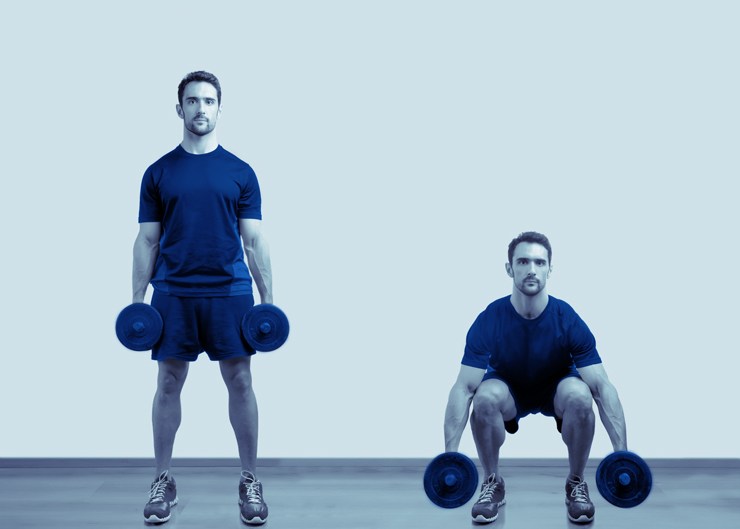
Variations
Barbell back squats maybe the King of exercises but with so many squat variations vying for attention, the King is only just on the top of the pile! There are lots of different ways to get your squat on so whether you are a beginner or a stone-cold expert, there is a type of squat just for you. Variations are listed in approximate order of difficulty from easy to advanced.
Bodyweight squat – the basic bodyweight squat is a great callisthenic exercise that can be performed almost anywhere. For high reps it’s a real cardio blaster too. Place your hands behind your head to develop the necessary upper body flexibility for barbell squats.
Goblet squat – a nice way to introduce squatting with weight, goblet squats involve holding a single dumbbell or kettlebell in front of your chest and just below your chin. This forces you to keep your chest up and sit back into the squat. Put a rubber resistance band around your knees to practice pushing your knees outward.
Split squat – requiring flexibility and balance, split squats place an additional emphasis on one leg at a time. Take a large step forward and then stop – get your balance. Bend your legs until your rear knee lightly touches the floor. Keep your body upright and go straight down – not forward. Stand back up and repeat. Hold dumbbells for a more demanding workout.
Front squats – with the barbell racked across the front of your shoulders instead of the back, this exercise promotes a much more upright torso position and is said to place more emphasis on your quadriceps. Preferred by athletes over the back squat, front squats require a high degree of upper body flexibility and are generally performed using a narrower than shoulder-width stance.
Hack squats – named after famous old-time wrestler George Hackenschmidt, this exercise involves placing a barbell on the floor behind your ankles, bending down and grabbing it with both hands before standing up using your legs. A tricky movement initially, this exercise will give you a very effective quad workout.
Squat jumps – performed with a light weight or no weight at all, squat jumps use the same squatting movement discussed previously but ends with a powerful leap into the air. This will develop power rather than strength – power being your ability to generate force quickly.
We know that the most important thing is the quality of the Adipex Online drug, and with them we are always sure about it.
What makes Essential to take Levitra Medication? Levitra is one of the popular generic medicine which is commonly used for the treatment of erectile dysfunction. Mostly people are facing the sexual function problem that is related to a weak penis. With the consumption of such medication, it regulates the flow of blood to penis muscles .Read more at https://levitralab.com
Overhead squats – the overhead squat builds total body strength, stability and mobility. Hold a barbell overhead using an overhand, wider-than shoulder-width grip. Squat down while keeping your arms held aloft and the weight over your feet. This exercise is tough with just an empty bar and a killer when you are hoisting heavy weights.
Pistol squats – pistols or one legged squats are hard to master but can help ensure your legs are equally developed. To perform a pistol, stand on one leg with your free leg held slightly in front of you. Squat down and simultaneously lift your free leg clear of the floor. At the bottom position your free leg should be parallel to the floor. Stand back up and repeat. Hold a weight in your hands (as per the goblet squat) to make this exercise more challenging.
Conclusion
Whatever your fitness goal, squats will get you there faster. In the old days of physical culture, exercisers squatted with religious fervour and claimed they were the key to total body fitness and strength. Squats fell out of favour because they are such hard work but hard work is what produces results and that is why they are the King of exercises!
Share this:
Click to share on Twitter (Opens in new window)
Click to share on Facebook (Opens in new window)
Click to share on Google+ (Opens in new window)
AUTHOR
Hi, my name is Dinny Morris. I’m a personal trainer and in sunny Sydney, Australia.
I work with men and women at all levels of their physical development, from overweight couch potatoes who want to get in shape, to professional athletes and natural bodybuilders who want to beef up strength and body mass.
Hi, my name is Dinny Morris. I’m a personal trainer and in sunny Sydney, Australia.
I work with men and women at all levels of their physical development, from overweight couch potatoes who want to get in shape, to professional athletes and natural bodybuilders who want to beef up strength and body mass.

by Dinny Morris | Dec 5, 2016 | Health
Waist Circumference And Heart Health Issues

Ask most people why they exercise and/or diet and inevitably they’ll tell you they want to lose weight. Wrapped up in this answer is also the desire to change their body shape, get fit and improve their health. However, despite this, there is a real obsession with how many kilos they weigh.
Obviously, your body has mass, that’s why when you step on the scale the needle moves but more important than your actual weight is what that weight is made up of and where it is located.
For example, you can lose weight by simply skipping a few meals so that your digestive tract and stomach are empty or simply sweating or urinating. A litre of water weighs one kilo so if you pee out 500 ml you’ll instantly be half a kilo lighter. Have you lost anything meaningful? No! Will this lost weight be quickly regained when you eat or drink next? Yes!
So, focusing on your weight is a mistake but how else can you track your progress and results and also establish whether you are about the right weight for your build? Good questions!
In fitness, we often use tools like bioelectrical impedance machines, skinfold callipers and DEXA machines to measure how much of your weight is made up from fat compared to muscle, bone, skin and organs. This results in something called your body fat percentage. Body fat percentage tests vary in accuracy by method and the person conducting the https://junglefitnessoc.com/accutane-for-sale/ tests with DEXA being the most reliable and accurate but, for reasons of simplicity and ease, the medical profession relies on two other tests; the body mass index and the waist to hip ratio.
Body mass index compares your height to your weight and uses the following calculation…
BMI = Weight (kg)/Height (m)2
If that looks kind of complicated, don’t worry, there are lots of online calculators and apps you can use instead such as this one: http://www.healthdirect.gov.au/bmi-calculator
Once you have your BMI result, simply compare it to the following chart…
? 18.5 Underweight
18.5–24.9 Healthy weight range
25.0–29.9 Overweight
30.0–34.9 Obesity I
35.0–39.9 Obesity II
? 40.0 Obesity III
Unfortunately, as quick and easy as BMI is, there are several factors that can result in inaccurate readings. For example, if you are an avid exerciser and you carry significantly more muscle than the average person, you will score a higher BMI simply because you are “penalized” for being heavy even though you may be very lean – muscle is more dense than fat. It is not uncommon for bodybuilders and strength athletes to be categorised as obese when clearly they are not.
A simpler and yet more useful measure is waist to hip ratio. Waist to hip simply compares your waist measurement to your hip (butt) measurement and while it doesn’t take your weight into consideration, it is a useful tool for identifying your risk of heart disease, heart attack and developing metabolic syndrome as takes into account the location of your major fat stores.
We all have fat – some of us have a lot and some of us have a little. However, it’s not just the quantity but the location that is important. Fat around your thighs, arms, hips and legs is not especially healthy or attractive but does not significantly increase your risk of suffering heart disease. In contrast, fat stored around your abdomen is sometimes even called heart attack fat and is very unhealthy. Your waist to hip ratio reveals whether you are carrying too much fat around your waist and if your waist measurement is too big to be considered healthy.
To calculate your waist to hip ratio, measure your waist and then your hips – use the widest parts. Next, divide your waist measurement by your hip measurement to produce a ratio.
For example, if your waist measurement is 100 cm and your hip measurement is 112 cm, your waist to hip ratio would be 0.89. Once you have your ratio, compare it to the chart below…
| Male |
Female |
Health Risk |
| 0.95 or below |
0.80 or below |
Low Risk |
| 0.96 to 1.0 |
0.81 to 0.85 |
Moderate Risk |
| 1.0+ |
0.85+ |
High Risk |
Again, if maths isn’t your strong suit, use an online calculator like this one: http://www.bupa.com.au/health-and-wellness/tools-and-apps/tools-and-calculators/waist-to-hip-ratio

Your waist measurement alone is also an excellent indicator of your risk for developing heart disease and as most of us already know our waist measurement from the clothes we buy, this is a very easy way to identify your risk for heart disease. They say size matters and in the case of your waist, smaller is better!
Like BMI, there are a few factors that can reduce the validity of this test – some medical conditions cause abdominal distension which will create a bigger waistline that is not actually caused by fat and pregnancy is another thing that invalidates this test. However, both waist to hip ratio and waist measurement alone are very reliable indicators of your risk of suffering heart disease.
For women:
Risk is increased at ? 80 cm
Risk is high at ? 88 cm
For men:
Risk is increased at ? 94 cm
Risk is high at ? 102 cm for men
http://heartfoundation.org.au/your-heart/know-your-risks/healthy-weight/waist-measurement
Now, before you start banging out crunches in an effort to lose centimetres from around your waist, remember that no amount of abs exercises will magically trim fat from your stomach. Losing fat from your abdomen and waist requires a holistic approach including diet, exercise and mindset.
Many people suffer “middle age spread” as they hit their late 40s and 50s and big bellies are becoming more and more common in younger people too. Unfortunately, there is an unbreakable link between abdominal fat and risk of suffering from heart disease, heart attacks and a host of other medical conditions. If you care about your long term health and maximizing your lifespan, make sure you stay on top of your waist measurement and don’t just buy clothes with a larger waist.
Share this:
Click to share on Twitter (Opens in new window)
Click to share on Facebook (Opens in new window)
Click to share on Google+ (Opens in new window)
AUTHOR
Hi, my name is Dinny Morris. I’m a personal trainer and in sunny Sydney, Australia.
I work with men and women at all levels of their physical development, from overweight couch potatoes who want to get in shape, to professional athletes and natural bodybuilders who want to beef up strength and body mass.
Hi, my name is Dinny Morris. I’m a personal trainer and in sunny Sydney, Australia.
I work with men and women at all levels of their physical development, from overweight couch potatoes who want to get in shape, to professional athletes and natural bodybuilders who want to beef up strength and body mass.
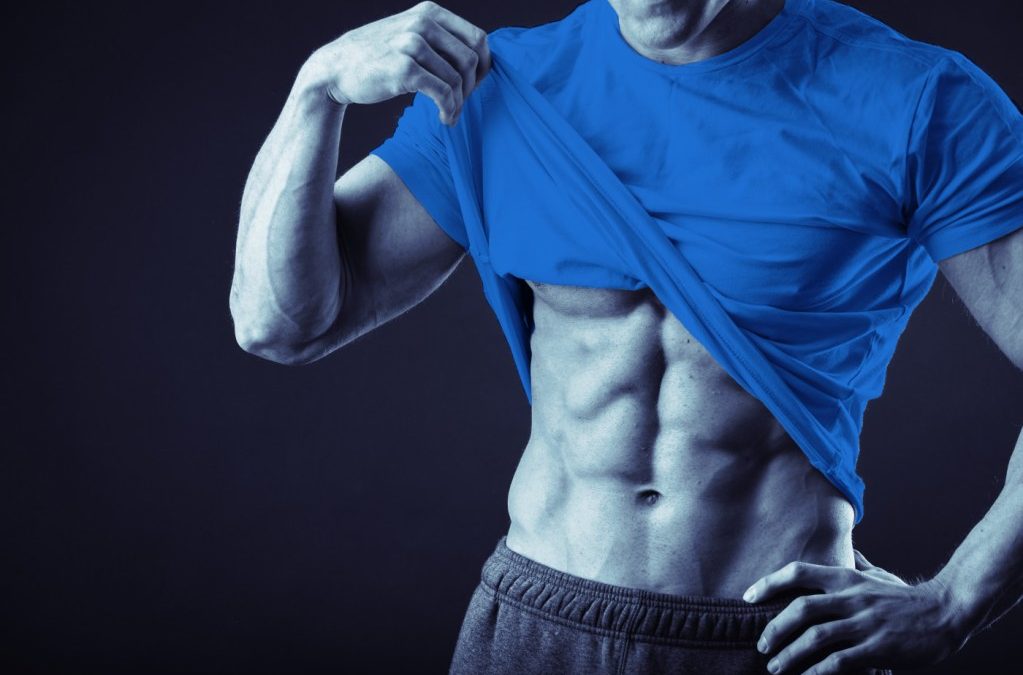
by Dinny Morris | Dec 5, 2016 | Dinnys Blog
In this step by step guide, I will reveal the tricks to How To Lose Belly Fat your very own – just in time for the summer!
A well-defined six-pack is one of the most sought after fitness goals but it’s not easy to obtain. Some exercisers never really get what they want despite performing endless sets of crunches and other similar abdominal exercises. It’s very hard to say exactly how long it will take you to develop this fitness holy of holies but if you follow this six-step plan, it should happen sooner rather than later. Remember though, your abs are just one muscle group and your ab training should be part of a well-designed and periodised training program that focuses on not just how you look but how you feel and function too…
Step one – get lean
Step One – How To Lose Belly Fat
Many people have well developed abs but any muscular detail is obscured by a thick layer of fat, this subcutaneous Fat and the deeper fat that causes a mans belly to protrude is called Visceral Fat. The only way to make your abs more visible is to get leaner and drop the surrounding layers of bodyfat, now for some guys not so much the girls, they can get fearful as they see themselves shrinking in size because they are losing fat and it can play with your mind a bit if your goal to add muscle, this is actually fat being dropped off the body and if you have some stored on your back or arms it can feel like your losing muscle your not its actually fat coming off all over the body, if you are not sure then you are best to get a DEXA Scan this best as this is very accurate at determining your body fat mass and muscle mass. This means dropping your body fat to 10% or below for men and 15% or below for women. This is best achieved with a reduced carbohydrate/calorie controlled diet and regular cardiovascular exercise and interval training plus building muscle, as outlined in point two below.
Good diets for fat loss include, cyclic ketogenic diets, the Slow Carb Diet, the Palaeolithic diet, any carb cycling diet and the Atkins diet. So long as you can stick with it and you don’t starve yourself (which can actually promote fat storage and not fat loss) almost any diet will work but make sure you choose ones that keep you healthy.
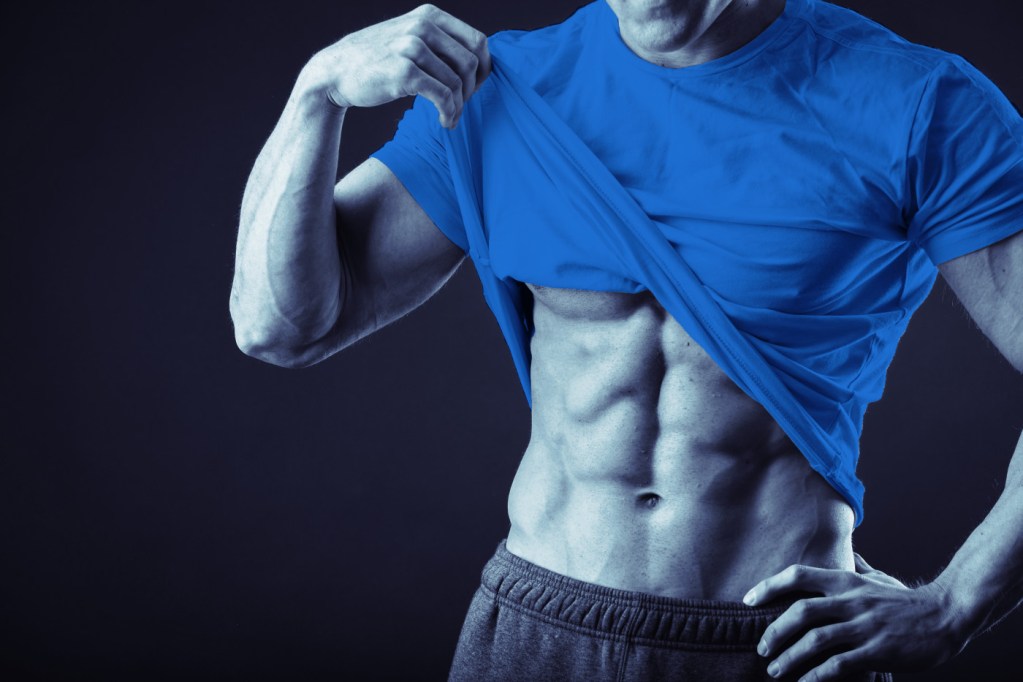
Step two – build some muscle
Rather than target your abs with lots of direct core exercises such as sit ups, you are better off trying to develop all of your muscles by performing regular strength training. Your abs bridge the gap between your arms and your legs so it makes sense that when your extremities get stronger, so will your abs. It’s not called the core for nothing after all!
Some direct ab work is okay but focusing on overhead pressing, squats, deadlifts etc. will place more load on your abs than any type of sit up ever will. Building bigger muscles throughout your body will elevate your metabolism and make sure you burn as much fat as you possible can so you reveal your six-pack abs all the sooner. Direct ab work is definitely important but do it at the end of your regular strength training workout as a finisher once the “real” work is done.
Step three – improve your posture
Standing up straight can make the difference between flat abs and a paunch belly. When you hunch forwards, your abs tend to bow outwards and even if you are lean enough to show off a six pack, it will look crumpled and ugly. Stand up straight, lift your chest, lengthen your neck and pull your shoulders back. This will flatten your stomach and make them look far more impressive even if you are not quite lean enough to reveal your six-pack.
Like most of us, you probably spend a long time sat down so it’s very important that you remedy this by strengthening the muscles on the back of your body and stretching those on the front – especially your hip flexors. This, as well as body position awareness and practice, is the key to better posture and flatter abs!
Step four – learn to brace
Bracing describes tensing your abdominals and other core muscles without actually moving your spine. Imagine you are about to be punched in the gut and you tighten up to protect yourself – that’s bracing! You should do this whenever you perform any strenuous exercise and also when you want your abs to look their best. Bracing is the core equivalent of raising your flexed arm to show off your biceps!
Practice bracing whenever you get the chance – it will help harden up your abs and also protect your back when you are lifting heavy weights.
Step five – forget about spot reduction
Many exercises make the mistake of performing a high volume of ab exercises in the hope that they will burn off fat from their midsections. Worse still, this is often done on a daily basis. Your abs are just another muscle group and just as you wouldn’t train your legs every day, nor should you train abs so frequently.
As a general rule, limit your repetitions to less than 20 and perform two to three sets of two to three exercises twice a week. This, plus the bracing described in point four, is all you need for well-developed abs.
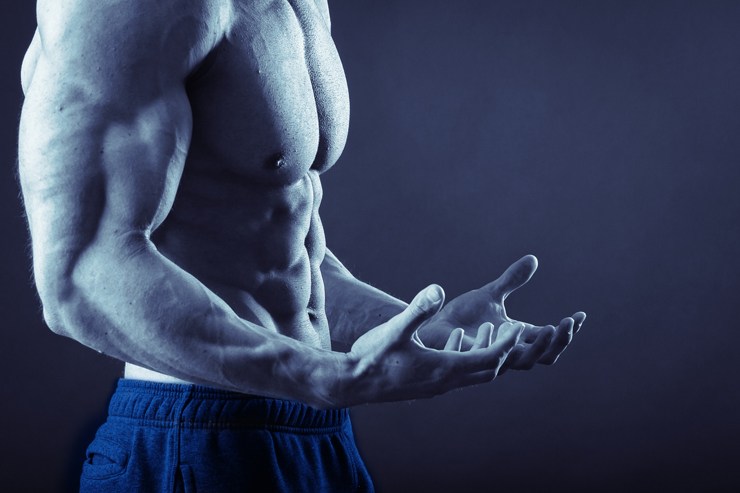
Step six – work your abs from a variety of directions
When it comes to ab training, most people spend way too much time working on flexion or forward bending exercises and completely forget about the other functions of the midsection. Make sure you include lateral flexion (side bends) and rotation exercises to work your abs from a variety of directions to ensure optimal development. Remember though, all the ab work in the world won’t give you a six-pack if you don’t take care of business in the kitchen and the rest of your training. It is quite possible to have an amazing six-pack but never reveal it because it’s permanently covered in an ugly layer of fat.
So, now you know what you need to do to get your very own six-pack. All that is left now is for you to put these steps into action!
Share this:
Click to share on Twitter (Opens in new window)
Click to share on Facebook (Opens in new window)
Click to share on Google+ (Opens in new window)
AUTHOR
Hi, my name is Dinny Morris. I’m a personal trainer and in sunny Sydney, Australia.
I work with men and women at all levels of their physical development, from overweight couch potatoes who want to get in shape, to professional athletes and natural bodybuilders who want to beef up strength and body mass.
Hi, my name is Dinny Morris. I’m a personal trainer and in sunny Sydney, Australia.
I work with men and women at all levels of their physical development, from overweight couch potatoes who want to get in shape, to professional athletes and natural bodybuilders who want to beef up strength and body mass.
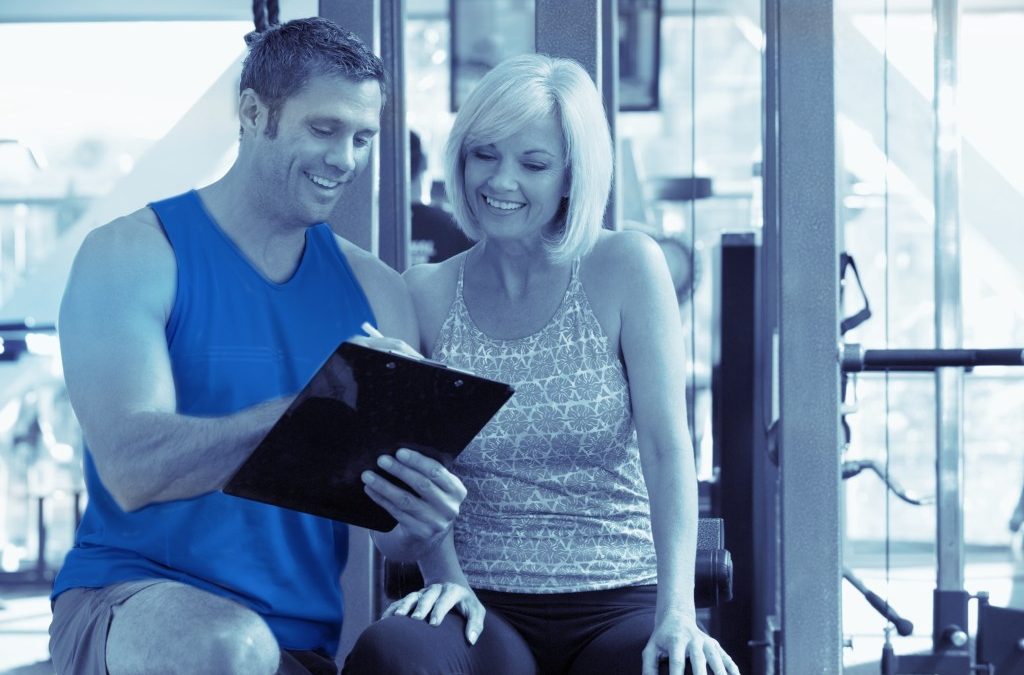
by Dinny Morris | Dec 5, 2016 | Exercises
And give you a big lift and drive and motivation that maybe you are lacking in your own workouts and can give you that extra 30%-50% extra push that you cant yourself. Can keep you accountable and goal focused.
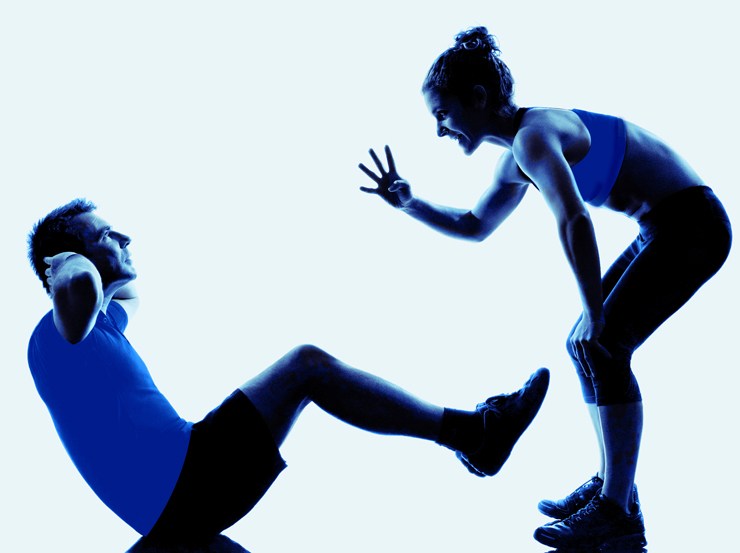
1. Are they certified? It can take sometimes 8 weeks to go through a personal training course or some certifications to be a personal trainer can be done online and can take a lot lot less. To legally operate as a personal trainer the trainer requires a first aid certificate and Certificate 3
and 4 in fitness. This sets the base of being able to train clients.
2. Assessments: In the gym you see it a lot the bad techniques of exercises that some people put them selves through because they saw some egomaniac dickward LOL doing it on you tube, but the reality is this NOT everyone can do these exercises!! Olymipics Lifts, rotation work etc need to be left for a professional to recommend in a training session, as per your training age and assessment they put you through. When first signing up with a trainer ask them if they are going to access you, this may be fat Skinfold testing, before and after photos, in the first session, some trainers allocate 1-2 sessions of just assessments alone, some of the assessments maybe blood pressure, sometimes a really long annoying form asking about past/current injuries etc etc (I have one of these forms) an assessment on certain exercises, they may look at tightness in certain muscle groups, to discuss injuries or see where there are weakness in a certain body weight exercises, this is VERY important this creates the basis of your program which you will need to follow in order to get the correct results with DOMS not injuries. From experience you can push a client hard depending on many factors, BUT the exercise selection must reflect the clients training age, so if your PT has you doing deadlifts or rotation work in the gym and you have a herniated disc or spinal problems, or your doctor has said don’t do rotation work and your trainer gives you rotation work wtf . they may not be the right trainer for you, and you maybe paying them to hurt you not help you.
3. In Australia we have a fitness association which is called fitness austrailia all personal trainers need to be registered through here and hold all certifications. Fitness Austrailia is a industry body that sets and maintains standards within the fitness industry, I think personally it is good to have a trainer that is associated with this company as it shows they have all correct certs in place. And also that that Trainer identifies with a professional body.
4. Insurance: Does your trainer have insurance, every now and then you see people in plain clothes training someone in the gym, taking a sneaky littles session and getting paid for it hahaha, making the client do exercises and yelling at the client pull harder, go go go, when in actual fact the client who is not aware who is working dam hard but has bad form and has a real bad kyphosis during a deadlift could really injure themselves. ( my pet hate is seeing people on the smith machine doing squats and letting the spine tuck under MAJOR injury could potentially happen here. So where was I oh yes, so if you have trainer make sure he/she is insured as if you injure yourself you want to be PROTECTED!!! And myself as a a trainer have insurance for me it is a MUST!! If you have a trainer that is not insured maybe you should leave the party?
5. Professionalism. If you have a trainer that pulls out a cellphone during your session……………..Oh No You Dddint!!! That is rude, that is like pulling out your phone on a date and updating your face book profile while looking at the screen smiling and shaking your head at what the other person is saying CA– USE YOUR NOT INTERESTED LOL!! Not cool, especially if they the trainer says hey Im just updating my facebook profile is cat spelt with a K?? We all know how uncomfortable it is to be in dentist or similar and that happen so why expect it from a PT? Leaning, Yawning, talking to other people other trainers, talking about their lives instead of getting you trim lean and turning you into a bad ass fighting machine!!! Don’t accept this tell them, please don’t text when I am training with you, its rude or something like that.
6. Nutrition: This is a must all trainers must give you some guidance (here are 3 little simple sneaky ones for fat loss: Cut dairy moo, bread, drink a heap I mean a heap of water). This should either consist of a eating diary for a week or two of the clients eating pattern, as some clients freak out when they realize they are having 2 bottles of wine a night haha. It makes them accountable and change their ways. Nutrition is a big one as it is the basis of getting a client results; you cant out train a bad diet!!! Straight from the lips to the hips or something like that.
7. Following a program, that means every 2-3-4 weeks the program changes this stops any boredom of exercises for you and also tricks the body and keeps it on it toes so the results don’t stagnate. This means a complete change of exercises or leave some in depending on the goal or client training age, changing weights, type of weights, type of way the weight is lifted, different rep range, sets, tempo, etc etc.
8. Accountability. They need to hold you accountable and they need to say it how it is, if you tell your trainer that you like these scrumish little chocolate muffins at a café by your work, they need to tell you those little fuckers will make you fat not phat!! If you aren’t getting results you need to also put yourself in the position of being told some truths, cause well your loved ones may not as they don’t see the weight issue. They need to keep you motivated one habit I have is asking my clients what they ate for breakfast, as most people don’t eat breakfast. This sets them up not to forget to eat breakfast cause they know I’m going to ask them what they had for breakfast.
9. Refer you out: if you have an injury with your spine say, they should refer you out not try and fix them yourself if they aren’t qualified. The injury heals sooooo much faster when it is seen by a professional.
10. You have to like the person LOL if the chemistry is not there with the trainer its just not there, you have to spend time with this person if you can relate to them and don’t feel comfortable then, this trainer might not be for you. There are still some passionate trainers out there that have not got other certs apart from certificates 3 and 4 and still can get amazing results for people. And when you are more comfortable with someone you are more likely to stick at training and may reach your goals.
11. You have to like the person LOL if the chemistry is not there with the trainer its just not there, you have to spend time with this person if you can relate to them and don’t feel comfortable then, this trainer might not be for you. There are still some passionate trainers out there that have not got other certs apart from certificates 3 and 4 and still can get amazing results for people. And when you are more comfortable with someone you are more likely to stick at training and may reach your goals.
12. Appearance: Woah Im actually going to go there!! Ok if they look like they live on a diet of Pies I would reconsider hiring them, as you want a trainer that walks the talk!! But at the same time, you need to ask what have their body battles been? Me I was the fat kid then the way too skinny kid getting down to 55kgs at 24 way way to skinny. For my health. Im now rocking 78kg naturally and getting bigger that’s what I have been aiming for with my training, that’s another thing if your tainer is young they may be just have good genes and can eat what ever they like and not worry about putting weight on and don’t have to train next to at all. Or they may say they are natural ie Mr illegal supplement king and they are not. Do your research as this these two have major imapacts on your results as these are not training or utilizing the bodies natural hormones via diet and exercise.
13. Intensity: Depending on your goals. Your paid sessions need to be planned out, with weights exercises and needs to flow so you are getting the most out of your time with a PT. And it needs to be at the intense level as to where your goal is. What you put in is what you get out of it, and when hiring a PT they are giving you a boost. So you need to work hard to get the results.
14. Defined Goal: When hiring a PT be specific tell them about something you don’t like about your body like your louuurve handles or your legs, etc they can then program that into the sessions more or suggest alternatives.
And can program for you when you are at the gym by yourself.
15. Contunial Education: A good trainer has done more than cert 3 and 4 and first aid and read the lastest article on www.soyouwantafriggingamazingbody.com (not actually a site?). The Fitness Industry is constantly changing new information is coming out constantly and some of it is not so benifeical and more fad type stuff. So its good to see that someone has continued on with education with a respected international strength coach or company that has many many years of experience to make themselves a better trainer and aid in better results for their clients.
My aunt has been always like a mother for me. Unfortunately she has a severe diagnosis – III stage of bone cancer. This thing provides awful and buy tramadol online…

So there you have it. Remember it’s all about your goals and what you want to achieve at the gym or with a trainer. A personal
Trainer can massively advance your results especially when they are holding you accountable, screaming at you one more one more rep, nutrition advice, motivation. But there are a few things to watch out for, as noted above.
Share this:
Click to share on Twitter (Opens in new window)
Click to share on Facebook (Opens in new window)
Click to share on Google+ (Opens in new window)
AUTHOR
Hi, my name is Dinny Morris. I’m a personal trainer and in sunny Sydney, Australia.
I work with men and women at all levels of their physical development, from overweight couch potatoes who want to get in shape, to professional athletes and natural bodybuilders who want to beef up strength and body mass.
Hi, my name is Dinny Morris. I’m a personal trainer and in sunny Sydney, Australia.
I work with men and women at all levels of their physical development, from overweight couch potatoes who want to get in shape, to professional athletes and natural bodybuilders who want to beef up strength and body mass.

